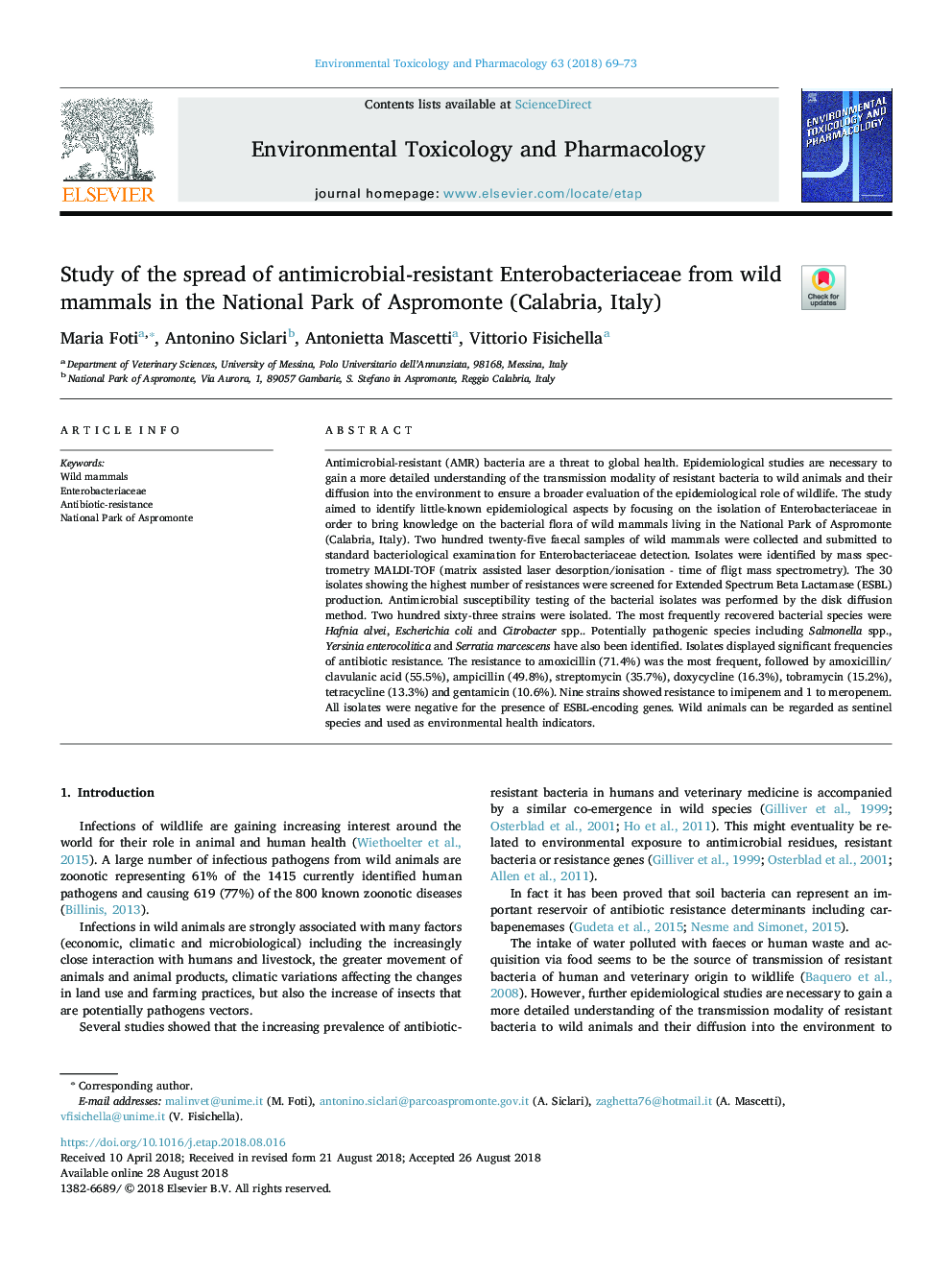| کد مقاله | کد نشریه | سال انتشار | مقاله انگلیسی | نسخه تمام متن |
|---|---|---|---|---|
| 9954992 | 1561681 | 2018 | 5 صفحه PDF | دانلود رایگان |
عنوان انگلیسی مقاله ISI
Study of the spread of antimicrobial-resistant Enterobacteriaceae from wild mammals in the National Park of Aspromonte (Calabria, Italy)
دانلود مقاله + سفارش ترجمه
دانلود مقاله ISI انگلیسی
رایگان برای ایرانیان
کلمات کلیدی
موضوعات مرتبط
علوم زیستی و بیوفناوری
علوم محیط زیست
بهداشت، سم شناسی و جهش زایی
پیش نمایش صفحه اول مقاله

چکیده انگلیسی
Antimicrobial-resistant (AMR) bacteria are a threat to global health. Epidemiological studies are necessary to gain a more detailed understanding of the transmission modality of resistant bacteria to wild animals and their diffusion into the environment to ensure a broader evaluation of the epidemiological role of wildlife. The study aimed to identify little-known epidemiological aspects by focusing on the isolation of Enterobacteriaceae in order to bring knowledge on the bacterial flora of wild mammals living in the National Park of Aspromonte (Calabria, Italy). Two hundred twenty-five faecal samples of wild mammals were collected and submitted to standard bacteriological examination for Enterobacteriaceae detection. Isolates were identified by mass spectrometry MALDI-TOF (matrix assisted laser desorption/ionisation - time of fligt mass spectrometry). The 30 isolates showing the highest number of resistances were screened for Extended Spectrum Beta Lactamase (ESBL) production. Antimicrobial susceptibility testing of the bacterial isolates was performed by the disk diffusion method. Two hundred sixty-three strains were isolated. The most frequently recovered bacterial species were Hafnia alvei, Escherichia coli and Citrobacter spp.. Potentially pathogenic species including Salmonella spp., Yersinia enterocolitica and Serratia marcescens have also been identified. Isolates displayed significant frequencies of antibiotic resistance. The resistance to amoxicillin (71.4%) was the most frequent, followed by amoxicillin/clavulanic acid (55.5%), ampicillin (49.8%), streptomycin (35.7%), doxycycline (16.3%), tobramycin (15.2%), tetracycline (13.3%) and gentamicin (10.6%). Nine strains showed resistance to imipenem and 1 to meropenem. All isolates were negative for the presence of ESBL-encoding genes. Wild animals can be regarded as sentinel species and used as environmental health indicators.
ناشر
Database: Elsevier - ScienceDirect (ساینس دایرکت)
Journal: Environmental Toxicology and Pharmacology - Volume 63, October 2018, Pages 69-73
Journal: Environmental Toxicology and Pharmacology - Volume 63, October 2018, Pages 69-73
نویسندگان
Maria Foti, Antonino Siclari, Antonietta Mascetti, Vittorio Fisichella,